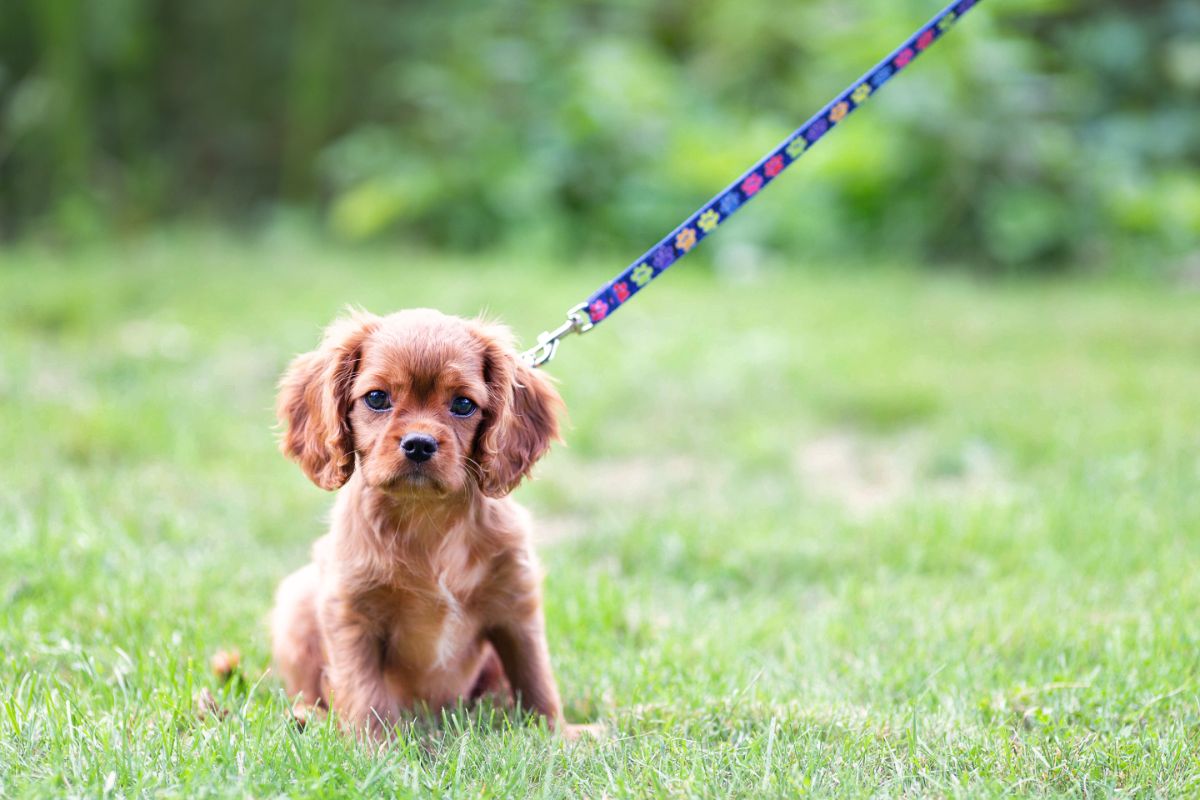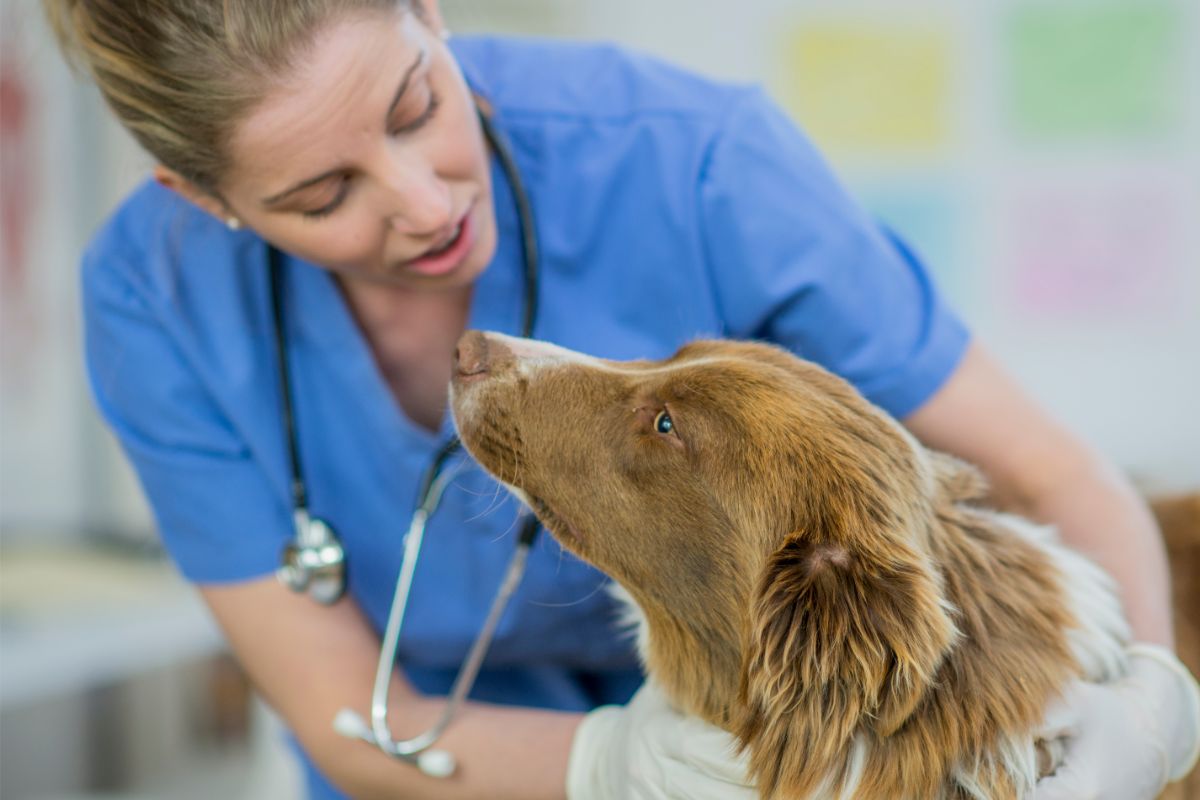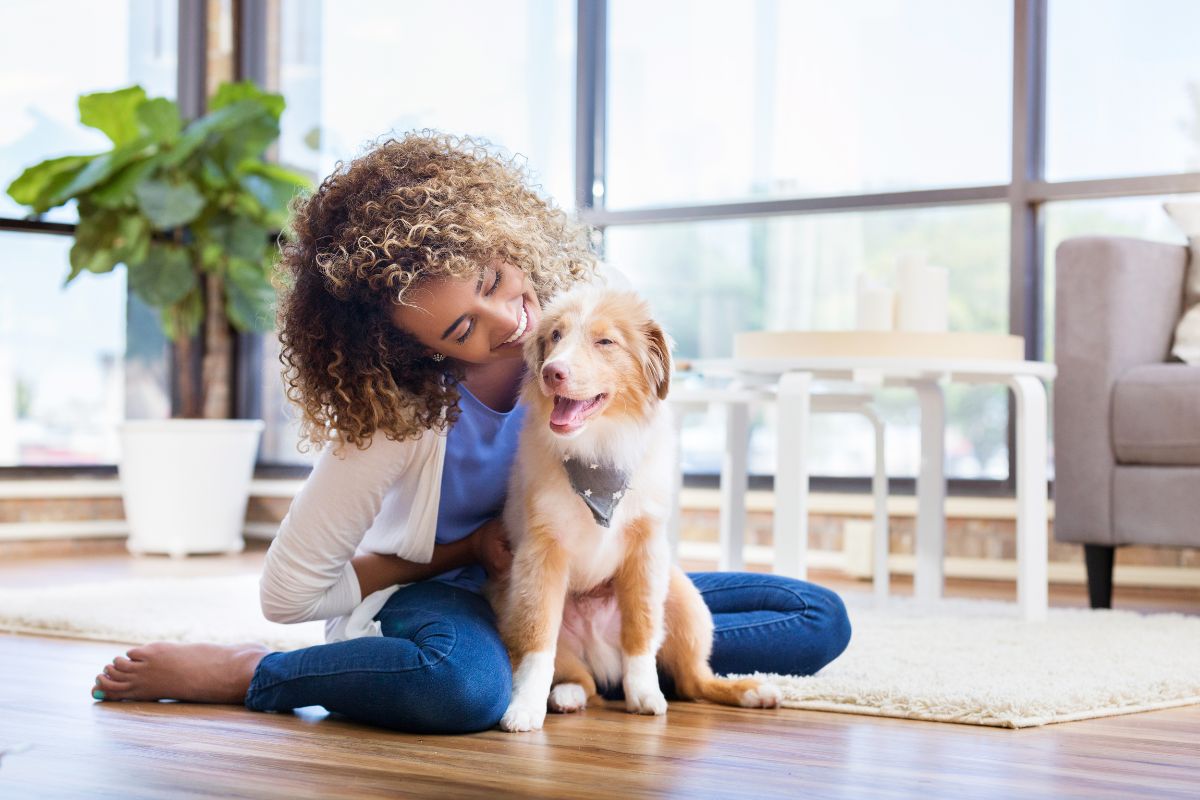Our pets help to bring countless hours of joy and love into our lives, and as such, it can be incredibly pleasant to have a number of pets within your household, to really maximize this love!
The only problem is, some animals simply do not get along together, and if they do, it can take a long time for them to become acclimated to each other, in a way that is not stressful for them.
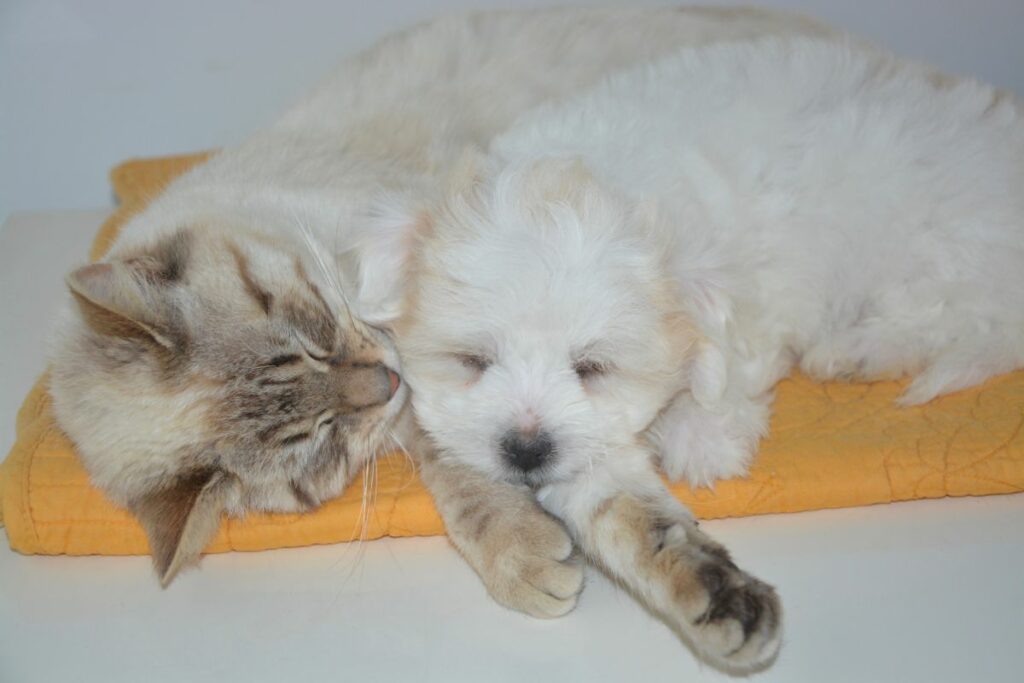
In fact, you have likely found yourself here because you have recently added a puppy to your family, but you are dreading the prospect of introducing the puppy to your own cat.
You want to ensure you do it just right so that the two pets can establish a bond, and you don’t want to rush it and end up with never-ending tension between your two beloved furry friends.
Luckily, we are here to help, because today we are going to take a look at how you should go about introducing your puppy to your cat!
How Should You Introduce A New Puppy To Your Cat?
Generally, when introducing a new puppy to your household cat, you will want to make sure to do so slowly, and with moderation. You want to allow both of the pets to get used to one another in their own unique ways, so you will want to make sure to introduce the two in a controlled manner.
The key is to not simply introduce your puppy to the cat right away, as this will be stressful for both of them and will make it much harder to get the two to bond.
Instead, there are a number of things that you can do to help streamline the process and help each pet to slowly get used to one another.
Let’s take a look at some of the most crucial things you need to do!
Prepare Your Home
The first thing you will want to do, before even introducing your puppy to their new home is to prepare the home for their arrival.
You want to ensure that there is enough space for the puppy to familiarize itself with the space and become comfortable.
However, you will also want to balance this with providing plenty of space for the cat to stay isolated. Just because you are introducing a new pet does not mean that you need to disrupt your cat’s comfort within the home.
Ensure that there is plenty of space within the home for the cat to find some solitude, where they can be away and keep calm should they ever find themselves overstimulated during the process.
As well as this, you will also want to make sure that your cat’s litter tray and food bowls are out of reach of the puppy, as the puppy may take an interest. This would also naturally lead to the dog’s scent rubbing off on them, which will cause the cat to be wary of even its own food!
Make sure to also provide plenty of adequate space for your dog to find solitude if it also finds the process overstimulating, a space where the dog can lie down, or even refresh itself at a water bowl.
This is also beneficial because it helps the puppy to get slowly used to the layout of the home, as you introduce them to one room at a time, which keeps them from becoming overwhelmed!
Make Use Of Scent
Both cats and dogs naturally have very keen senses of smell, and they can gather a lot of information about another animal from just scent alone. As such, you can use this to your benefit and slowly get the two acclimated to one another.
You can use all kinds of materials to get this job done, but we recommend using sheets that the puppy may have slept on. Grab the sheet and place it near your cat, or allow it to sniff it by holding it close to the cat’s face.
We also recommend grabbing a sheet that your cat may have slept on and placing this within the puppy’s environment, to allow it to get used to the scent of the cat.
At first, you may notice either of the two animals reacting to the new scent within their space. Do not worry, because this is very natural.
Just keep the animals separated, and keep exposing them to one another’s scents slowly. They will both begin to acclimate to the smell and not perceive it as any kind of threat.
As you allow the puppy to explore more space within the home, make sure to dab the cat’s scent around in key places, so that the puppy will recognize that the scent can be found all over the home.
At this point, we would also recommend that your puppy has a good grasp over certain commands like ‘sit’, ‘wait’, and ‘down’, as this will ensure if the dog ever has an adverse reaction to the scent, you can calm them down quickly.
Generally, you will want to keep the pets isolated until they begin to have no reaction whatsoever to one another’s scents!
Prepare For Introductions
You can never really be sure of how a pet will react to being introduced to a new pet, so you will want to make sure that the conditions are just right, and that you place them into a comfortable setting before starting.
You will want to ensure that both pets are relaxed and that they are both in a good mood before you make any attempts to introduce them. Ensure that both the dog and cat are sufficiently fed and that they are in a good mood.
Towards this end, you may want to take your puppy out for a small and relaxing walk before introducing them to the cat, as this can allow them to use up some of their energy, which will keep them from being over-excited when introduced to the cat!
Start Introducing Via Distance
Before your puppy and cat can really get up close and get to know each other, you will want them to first be able to identify one another visually.
We recommend guiding your cat towards a window in one room of your home and then taking your puppy outside on a lead, to look through the other side of the window.
Allow the two some time to visually identify one another and explore their curiosity.
Do not force the puppy and the cat to look at each other, or force them closer to each other, and allow them to move closer only if they wish to move closer.
If either the cat or the puppy wants to hide away, allow them to; this will keep their minds from becoming overstimulated.
Try to keep sessions of this activity short, so that neither of the two animals become overstimulated, and find themselves stressed out. You don’t want either of the two to grow to dislike their home and feel unsafe there!
Repeat this activity as many times as you need, starting at around one time per day, and then introducing more times per day.
When you think the two of them are ready, we recommend adapting the activity to make use of a mesh screen, instead of a glass window.
If you have a veranda, for instance, with a screen door to gain access to it from indoors, then allow the cat to sit on the interior side of it, while the puppy, on a leash, is allowed to approach it from the outside.
Making use of a mesh screen can be really valuable as it allows the two pets to not only identify one another visually but also build a connection between how the other looks and smells.
The two should, at this point, already be familiar with one another’s smells, and so this can be a great step towards strengthening their bond!
Again, repeat this activity as much as you need. Once the two begin to show positive signs around one another, or they seem comfortable in one another’s presence, then you can finally begin working toward the final introductions.
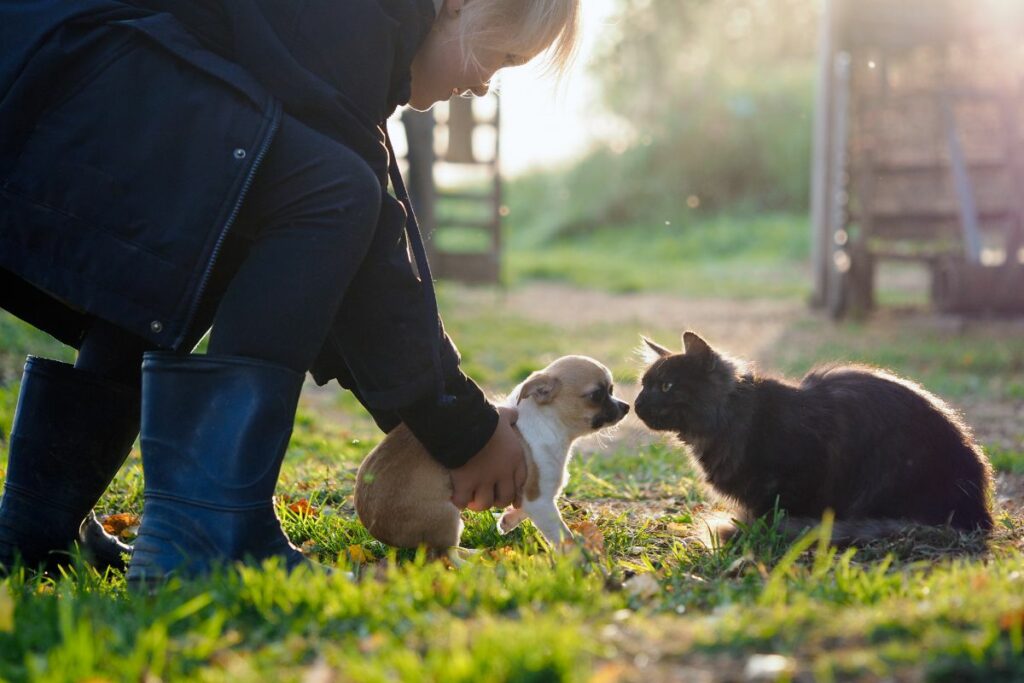
Full Introduction
At this point, your cat and your new puppy should be used to both the look and smell of each other, so you will be able to move toward introducing the two formally, and without barriers between the two of them.
Find a space within the home that is calm and spacious, allowing plenty of room for both pets to move around and explore, or escape if they need to.
You will want to try and find a space that is free of external stimuli, as these can cause either animal to become quickly overstimulated, and stressed out.
Keep your dog on its lead, and keep it within the chosen room, sat down or laid down, and in a calm mood. We recommend having some treats at hand to reward good behavior.
From here, simply allow the cat in by opening the door, and allow it to enter at its own pace. If the cat does not yet want to enter the room, do not force it, as this would be counterproductive, and lead to the cat becoming more distrustful of the puppy.
Ensure that you don’t close the door behind the cat so that it can easily duck out and escape if it feels stressed.
When the cat enters the room, you may notice that the dog’s attention quickly turns to it. At this point, try to keep the dog’s attention fixed on you.
Don’t draw the dog’s attention to the cat’s entrance, as that suggests to the dog that the cat is an unusual presence, and thus one to be wary of.
Make sure to reward the dog for being calm, and for paying attention to you, and not to the cat, as this will reinforce positive behavior!
Allow the cat to explore at its own pace, exploring the space, and getting used to the smell of the dog. You may notice that the cat is wary to start with, and may circle as far away from the dog as possible.
This is totally fine, and you do not want to force the cat to get any closer than it wants to go. Your cat may come closer if it wants, and when it feels more confident, but it is important to let it develop this confidence naturally.
If the cat runs out of the room, do not draw attention to it, and certainly do not allow the puppy to chase the cat away, as this will have long-lasting effects on their relationship.
How Many Times Should You Introduce Your Puppy To Your Cat?
Generally, there is no set number of times you should go about introducing your puppy to your cat. The two may establish trust right away, or they may need a few introductions to feel safe around one another. Perform the introduction as many times as you feel is necessary.
Repeat the session as many times as you feel comfortable, and every time the dog shows a positive and calm response be sure to reward them.
As the two animals become used to each other, they will naturally want to approach each other. Allow this to happen, as it is a great way for the two pets to breed familiarity with one another.
Allow the puppy to explore a little closer to the cat, but be ready to pull back gently on the leash if they become too excited. Allow the puppy to smell the cat, and then call the puppy back, to help reinforce that the cat is not a threat and not something to be wary of. Reward the puppy for good behavior, and for remaining calm.
Keep repeating the process gradually, as often as you feel is necessary. When the two pets seem comfortable around one another, feel free to remove the puppy’s leash, and allow the two to explore freely. If you need to rein the puppy in, make use of commands like ‘Stop’, and ‘Sit’.
The most important thing is simply to allow both pets time to adjust to being around one another, and not force them together, as this will only prolong the process.
How Do You Know If A Puppy Is Stressed Out?
As you work toward introducing your puppy to your cat, you will want to look out for signs of stress, which will help you to know when to intervene in the process.
When a puppy is relaxed, its gaze should be soft, and it should have very steady breathing, with relaxed muscles.
Naturally, this body language will change when the puppy notices your cat, and their gaze may become more fixed, and their tail may begin wagging. They may also start lightly barking, out of excitement. These are natural behaviors rather than signs of anything bad.
Generally, you will want to intervene if you notice your puppy baring its teeth, and growling, as well as licking its lips, as these are signs of severe stress and anxiety.
It’s also important to also look out for signs of resource guarding as this can be an early warning signal that your puppy isn’t happy.
Learn more about how to train a reactive dog.
How Do You Know If A Cat Is Stressed Out?
When a cat is in a relaxed state, you will notice that its ears are upright, its gaze is relaxed, and its tail is normally upright, with a slight kink in the tip.
You will want to look out for these positive signs when your cat is interacting with your puppy, as they are direct indicators that your cat is comfortable around the new puppy.
When cats are stressed, it is luckily very easy to spot. Look for things such as curved spines, crouching, low tails, hissing, and ears being pulled back. When you notice your cat displaying any of these, make sure to intervene and get between the cat and the puppy.
To Wrap Up
There you have it! Luckily, introducing your new puppy to the family cat is actually a lot easier than you might expect, you just need to make sure that you take your time and don’t rush the process.
Allow both pets plenty of time and space to get accustomed to one another, and don’t force them to spend time with one another if they do not wish it.
Forcing them together can breed resentment between the two of them, which can then make it tougher to get them used to one another.
- How To Teach Your Puppy Their Name Easily! - July 18, 2023
- Is Your Puppy Counter Surfing? Find Out How To Stop It! - July 18, 2023
- How To Train Your Puppy For Car Rides: Everything You Need To Know - July 18, 2023






